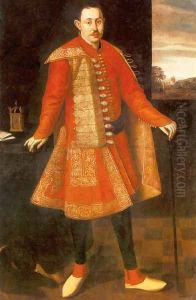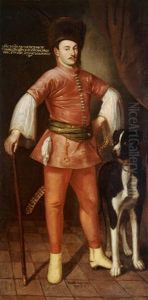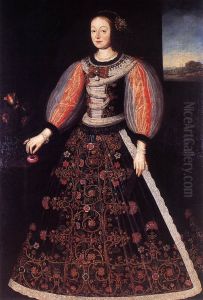Benjamin Block Paintings
Benjamin Block, also known as Balthasar Block, was a notable Baroque portrait painter, born in 1631 in Lübeck, Germany. Coming from an artistic family, Block was the son of the sculptor and woodcarver Daniel Block and Anna, née Hagen. He was part of a generation of artists who were active during a period of significant artistic development in Europe, which was characterized by a grand, elaborate, and dramatic style.
Block began his artistic training under his father and later continued his education in the arts by working with other established painters of his time. His talent was evident early on, and he quickly gained recognition for his skill in portraiture. Block's portraits were known for their realism, attention to detail, and the ability to capture the character and social status of his sitters.
In the 1650s, Block moved to Copenhagen, where he worked at the court of Frederick III of Denmark. His success there led to further opportunities, and he eventually became a court painter to Emperor Leopold I in Vienna. This position allowed him to paint portraits of various members of the Habsburg family and other European nobility. His work during this period solidified his reputation as a master portraitist.
Throughout his career, Block traveled extensively across Europe, which exposed him to various artistic influences and styles. He worked in several major artistic centers, including Regensburg and Nuremberg, and his style evolved over time. Despite the Baroque tendency towards embellishment, Block's approach to portraiture remained relatively simple and focused, often highlighting the humanity of his subjects rather than their status alone.
Block's contributions to art were not limited to his own creations; he also played a role in the development of other artists. He came to be seen as an influential figure for younger painters, and his works were collected by art connoisseurs and patrons throughout Europe.
Benjamin Block passed away in 1690 in Regensburg, Germany. His legacy is preserved in the numerous portraits that remain, which continue to offer insights into the faces and personalities that shaped the Baroque era. His paintings are part of the collections of many major museums and serve as a testament to his skill and the enduring appeal of his artistic vision.



